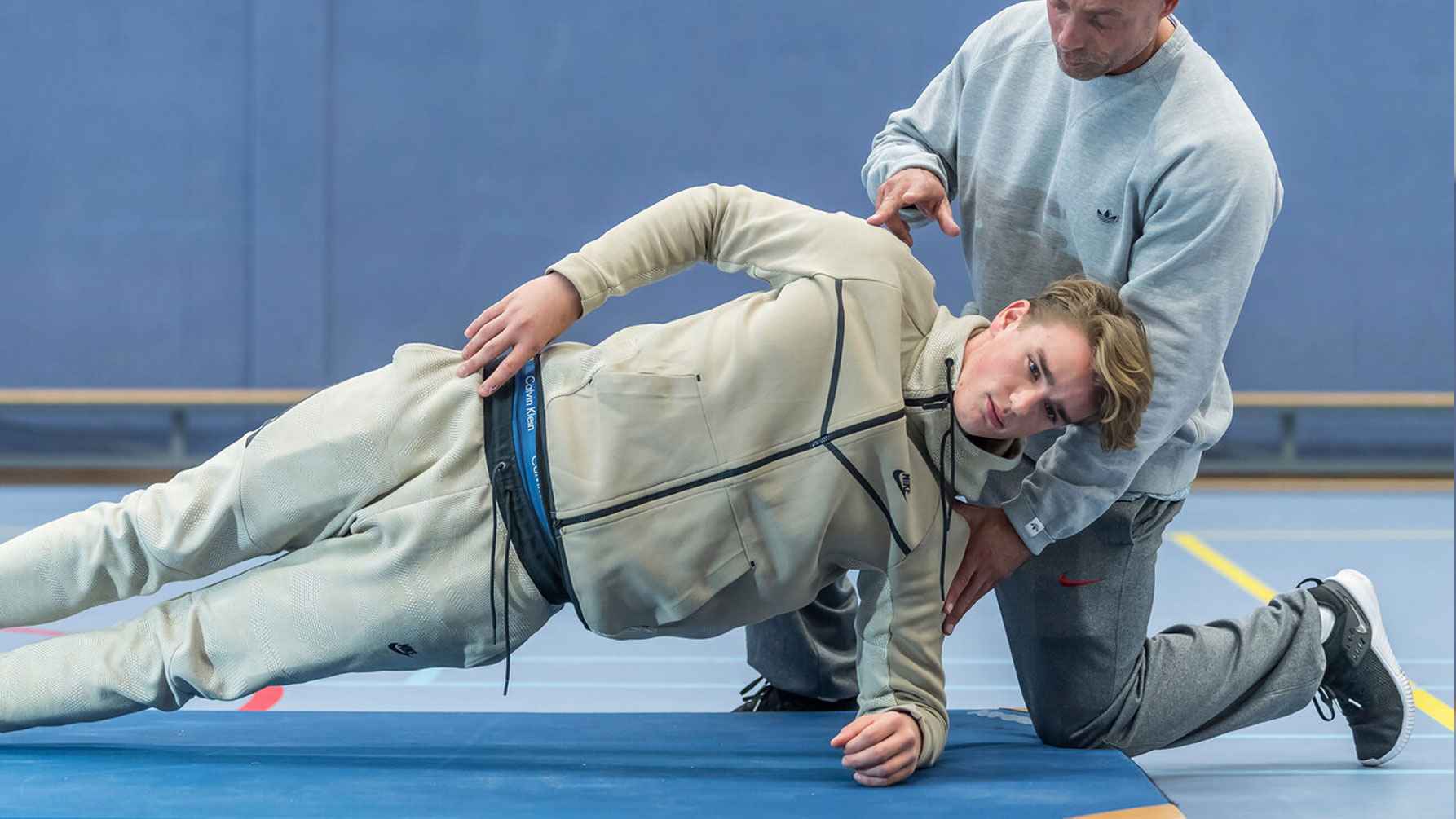Frequently Asked Questions (FAQ)
On this page, you can read about possible misconceptions and find the frequently asked questions.
1. Will nutrition play a major part in this minor?
No. Nutrition only plays a small role. The full name of this minor is Nutrition & Health Promotion Personal Trainer. The minor originates from the faculty of Nutrition and the subdivision is Health Promotion. Hence the name. But this broad minor revolves around all subjects relevant to becoming a personal trainer.
2. What kind of students enter this minor?
We welcome a wide variety of students; for example from Physiotherapy, Mensendieck and European School of Physiotherapy. Some students from Nutrition, Economics and Social Care but also students studying Math, Fashion, or other interesting subjects.
3. What if the minor is full?
Unfortunately, full is full. We are not allowed to maintain a waiting list with student records. However, sometimes students enrol and drop out of the programme at a later stage. Students that have shown interest before will then be notified.
4. Is the minor difficult?
Students say the programme is not difficult, but time-consuming. You have quite some homework. You must read a 650+ pages book in English that is very dense in information, and the rate at which the information is provided is very high.
5. Is the level of English difficult?
The English used in class is predominantly understandable for most. And you can ask the lecturer for help. However, the English used in the book ACSM’s Resources for the Personal Trainer can be challenging.

A fragment from the book:
The cool-down involves similar cardiovascular and muscular endurance activities as found in the warm-up, but now, the transition is from the higher intensity of the conditioning phase back toward resting status. During this time of low- to moderate-intensity activity, the body will experience a decrease in heart rate and systolic blood pressure, and metabolic end products (e.g., lactate) produced during more intense activity will be removed. Allowing for a gradual return toward baseline will help the client avoid post-exercise hypotension (low blood pressure) and potential dizziness (due to blood pooling in the legs rather than flowing back to the heart and brain).
6. Why are there extra costs involved?
We realise the extra costs are quite high for a student, but if you manage to get 1 client (after your internship) to sign up for 10 PT sessions with you, you’ll easily break even.
The extra costs involve 2 aspects:
- A Medic First Aid certificate (€ 65) is obligatory if you want to work in the sports and coaching scene. You can choose to get your certificate elsewhere, but your course needs to lead up to a (preferably) international certificate including the use of AED and the act of Life Saving events. Our rates are far below commercial MFA providers. Within the first part of the minor, the lectures and exams regarding the MFA course are extra, as well as the book (€ 75) and the (international) MFA certificate.
- An international Personal Trainer Certification through the ACSM. The ACSM is one of the world leaders in the certification of professionals working in the fitness and health industry. The ACSM collaborates with universities, has a huge knowledge base, has its scientific journals, and is widely recognised. You pay the ACSM membership fee (€ 65) to get access to their knowledge database and to sit for the ACSM-CPT exam (€ 300 and an additional € 300 if you need to retake the exam).
7. Why do I need an international certificate?
There is no clear Dutch Personal Trainer standard. Most people working in the fitness and health industry are either self-educated, self-employed or have a middle-level degree in education. We want to offer you a high-standard minor and chose to collaborate with the international-oriented and highly respected ACSM. Also, a Dutch middle education is of no practical use to our international students.
8. What is the success rate of the students so far?
The rates differ within years and even within semesters as well. On average, the success rate of students passing the whole minor is about 85%.
9. What is expected of me during my internship?
That differs. Some companies take their time to consider you qualified enough to handle PT sessions. Other companies will throw you in at the deep end. Some companies only provide PT sessions, and some are considering adding PT to their customer portfolio, but are uncertain how to do that.
On average you spend 70% of your time working the floor, being a fitness guide or acting as a personal trainer. The other 30 % of the time you work on a certain programme, stand behind the counter or bar, do some cleaning, and work on your internship report.
10. I'm a professional athlete, can I skip classes?
Possibly. Make an appointment with the minor coordinator Nils Swidde. He decides what would be the best solution in your case.
11. I'm dyslectic, does that cause a problem?
No.
- You must likely calculate more hours for reading the ACSM book.
- You will get extra time for the mid-term exam, and the end ASCM-CPT exam.